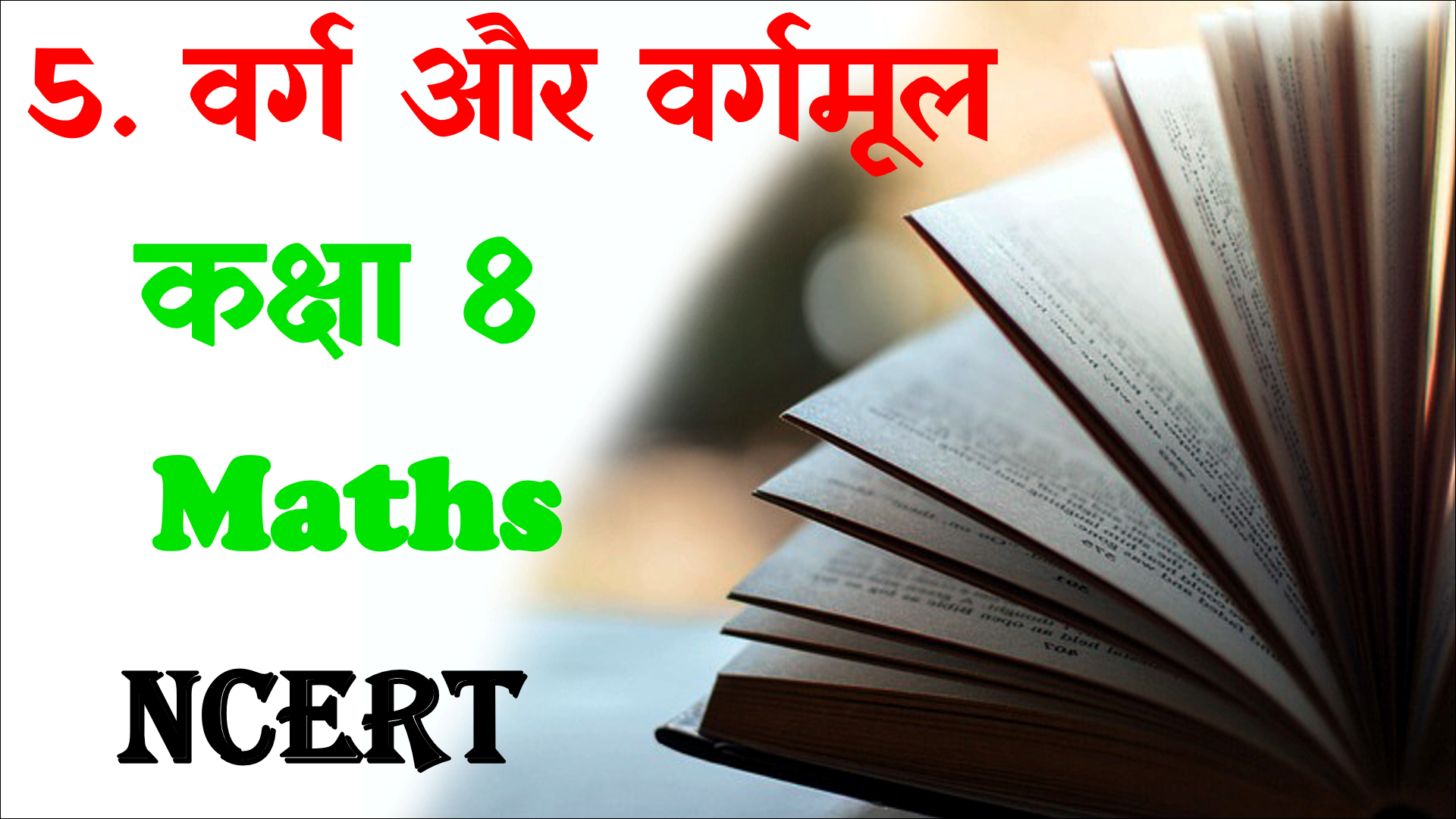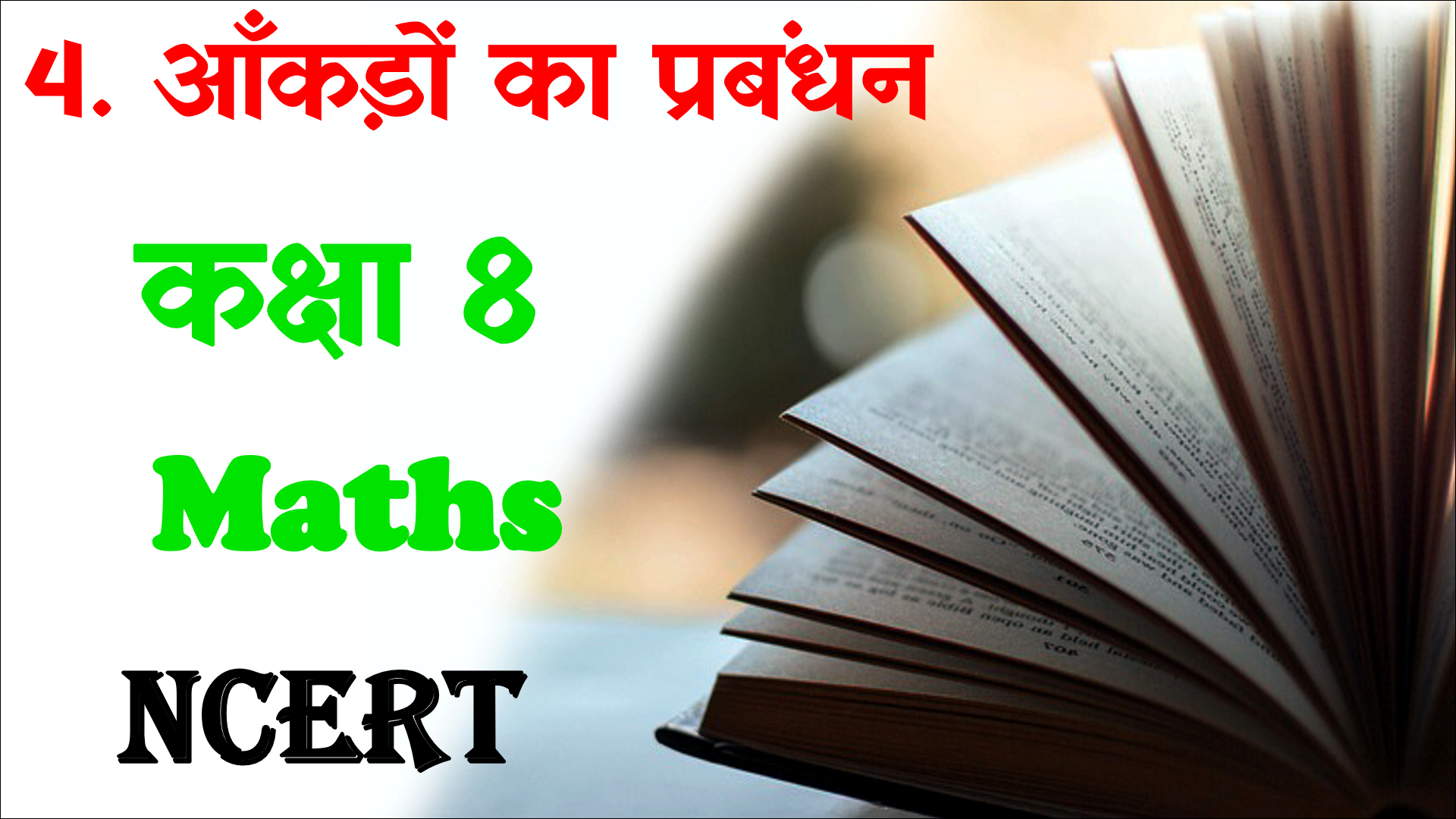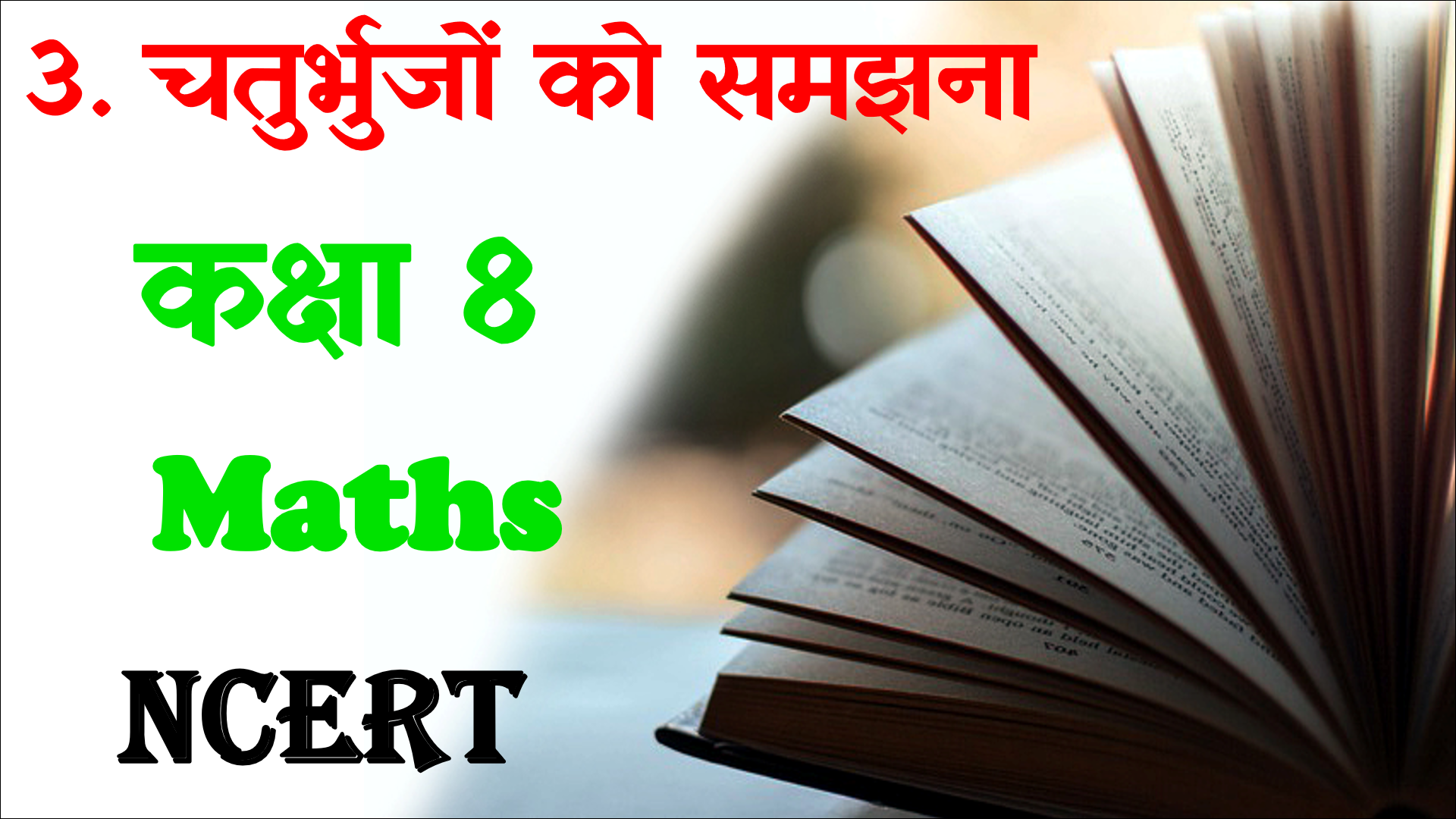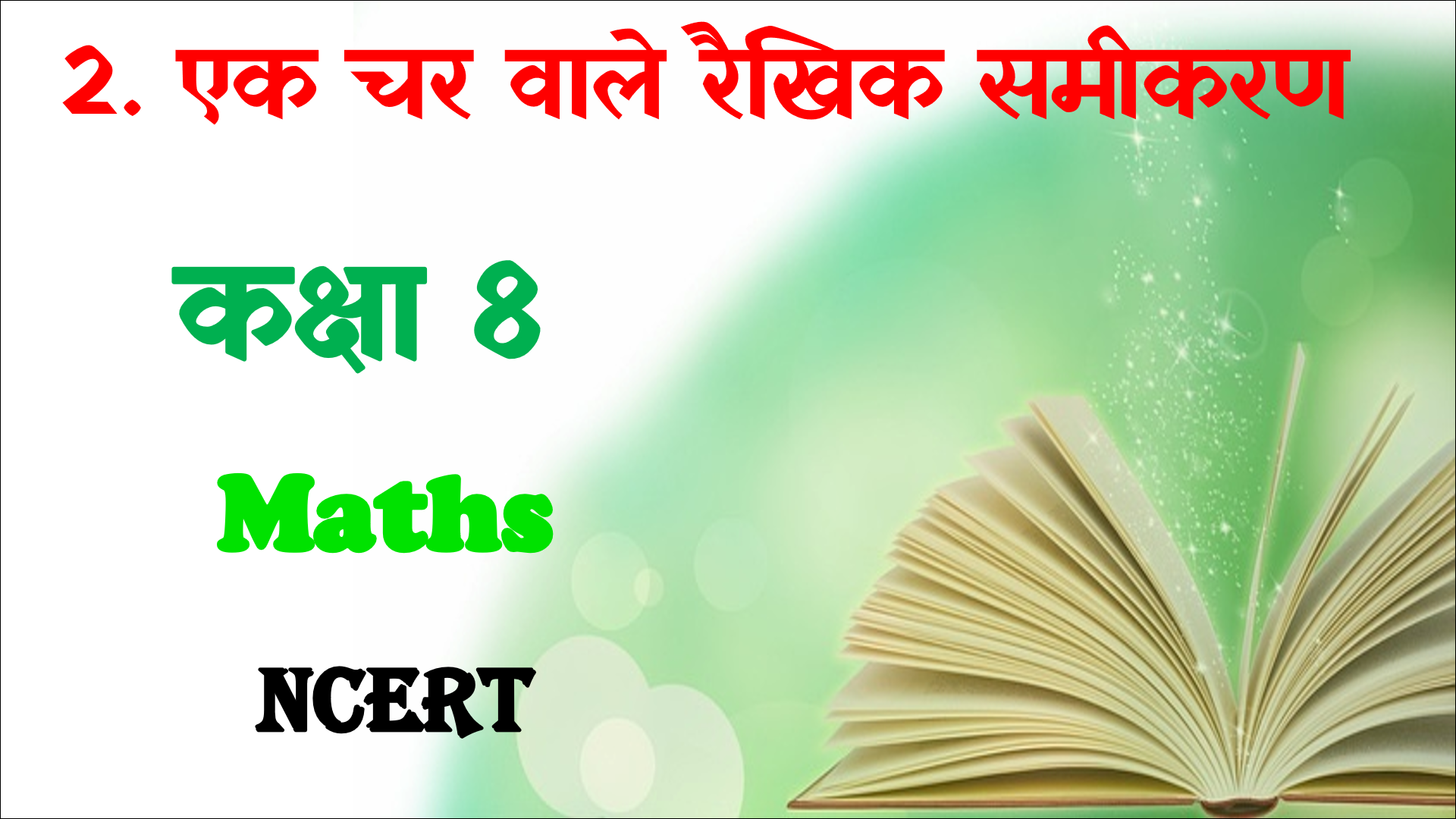NCERT Math Chapter 5 Class 8 Varg aur Vargmul Objective : दिया गया पेज में हम कक्षा 8 गणित के पाठ 3 के ऑब्जेक्टिव प्रश्न का अध्ययन करने वाले हैं। जो परीक्षा की दृष्टि के महत्वपूर्ण है।

अध्याय 5 वर्ग और वर्गमूल
प्रश्न 1. 1, 9 के वर्गो का इकाई अंक है ।
(A) 1
(B) 3
(C) 6
(D) 8
उत्तर –
प्रश्न 2. 42 का वर्ग है :
(A) 16
(B) 8
(C) 25
(D) 18
उत्तर – (A)
प्रश्न 3. 152 का वर्ग है :
(A) 125
(B) 225
(C) 30
(D) 625
उत्तर – (B)
प्रश्न 4. 272 के वर्ग के अकाई के अंक विना वर्ग किए ज्ञात करें ?
(A) 4
(B) 6
(C) 7
(D) 5
उत्तर – (A)
प्रश्न 5. निम्नलिखित संख्या में से कौन-सी पूर्ण वर्ग है ?
(A) 484
(B) 167
(C) 345678
(D) 56783
उत्तर – (A)
प्रश्न 6. निम्नलिखित संख्याओं में से कौन सी पूर्ण वर्ग है ?
(A) 4000
(B) 2500
(C) 9000
(D) 62500000
उत्तर – (B)
प्रश्न 7. 36, 28, 64, 19, 27, 81 में पूर्ण वर्ग संख्याओं को चुने :
(A) 36, 64, 81
(B) 36, 28, 27
(C) 64, 81, 19
(D) 27, 19, 28
उत्तर – (A)
प्रश्न 8. 9, 38, 16, 19, 121, 49 में पूर्ण वर्ग संख्याओं को चुने :
(A) 38, 19. 49, 9
(B) 9, 16, 121, 49
(C) 38, 121, 9, 19
(D) N.T
उत्तर – (B)
प्रश्न 9. 97 का वर्ग ज्ञात केरें ।
(A) 9409
(B) 7396
(C) 9405
(D) 7395
उत्तर – (A)
प्रश्न 10. 86 का वर्ग ज्ञात करें
(A) 9409
(B) 7396
(C) 9405
(D) 1225
उत्तर – (B)
प्रश्न 11. 35 का वर्ग ज्ञात करें।
(A) 9409
(B) 7396
(C) 9405
(D) 1225
उत्तर – (D)
प्रश्न 12. 30 और 40 के बिच पूर्ण वर्ग संख्याएँ ज्ञात करें
(A) 35
(B) 32
(C) 31
(D) 36
उत्तर – (D)
प्रश्न 13. 60 और 70 के बिच पूर्ण वर्ग संख्याएँ ज्ञात करें
(A) 65
(B) 64
(C) 66
(D) N.T
उत्तर – (B)
प्रश्न 14. 20 और 30 के बिच पूर्ण वर्ग संख्याएँ ज्ञात करें
(A) 25
(B) 27
(C) 28
(D) 22
उत्तर – (A)
प्रश्न 15. 452 = 4×5×100 + (……)2 रिक्त स्थान को भरें ।
(A) 5
(B) 7
(C) 9
(D) 11
उत्तर – (A)
प्रश्न 16. 652 = 6×(…..)×100 + 52 रिक्त स्थान को भरें ।
(A) 5
(B) 7
(C) 9
(D) 11
उत्तर – (B)
प्रश्न 17. (…..)2 = 8×9×100 + 52 रिक्त स्थान को भरें ।
(A) 88
(B) 85
(C) 97
(D) 84
उत्तर – (B)
प्रश्न 18. (125)2 = (…..) ×13×100 + 52 रिक्त स्थान को भरें ।
(A) 12
(B) 13
(C) 14
(D) 15
उत्तर – (A)
प्रश्न 19. (8265)2 = 826×(….)×100 + 52 रिक्त स्थान को भरें ।
(A) 826
(B) 827
(C) 828
(D) 829
उत्तर – (B)
प्रश्न 20. का मान निकालें ।
(A) 8
(B) 7
(C) 9
(D) 5
उत्तर – (B)
प्रश्न 21. का मान निकालें ।
(A) 8
(B) 7
(C) 9
(D) 5
उत्तर – (A)
प्रश्न 22. का मान निकालें ।
(A) 8
(B) 7
(C) 9
(D) 5
उत्तर – (C)
प्रश्न 23. का मान निकालें ।
(A) 12
(B) 13
(C) 14
(D) 15
उत्तर – (D)
प्रश्न 24. का मान निकालें ।
(A) 25
(B) 35
(C) 15
(D) N.T
उत्तर – (A)
प्रश्न 25. का मान निकालें ।
(A) 5
(B) 25
(C) 625
(D) 50
उत्तर – (B)
प्रश्न 26. का मान निकालें ।
(A) 2500
(B) 25
(C) 625
(D) 50
उत्तर – (D)
प्रश्न 27. का मान निकालें ।
(A) 49
(B) 7
(C) 14
(D) N.T
उत्तर – (B)
प्रश्न 28. का मान निकालें ।
(A) 17
(B) 289
(C) 172
(D) N.T
उत्तर – (A)
प्रश्न 29. का मान निकालें ।
(A) 1225
(B) 35
(C) 352
(D) 38
उत्तर – (B)
प्रश्न 30. 400 का वर्गमूल निकालें ।
(A) 20
(B) 200
(C) 40
(D) 220
उत्तर – (A)
प्रश्न 31. 625 का वर्गमूल निकालें ।
(A) 25
(B) 15
(C) 35
(D) 45
उत्तर – (A)
प्रश्न 32. 64 का वर्गमूल निकालें ।
(A) 8
(B) 9
(C) 10
(D) 11
उत्तर – (A)
प्रश्न 33. 121 का वर्गमूल निकालें ।
(A) 8
(B) 9
(C) 10
(D) 11
उत्तर –(D)
प्रश्न 34. का मान निकालें ।
(A) 105
(B) 125
(C) 11025
(D) N.T
उत्तर – (A)
प्रश्न 35. 23×23 का वर्गमूल ज्ञात करें ।
(A) 23
(B) 529
(C) 232
(D) N.T
उत्तर – (A)
प्रश्न 36. 25×25 का वर्गमूल ज्ञात करें ।
(A) 35
(B) 25
(C) 625
(D) 30
उत्तर – (B)
प्रश्न 37. 196 का वर्गमूल ज्ञात करें ।
(A) 14
(B) 13
(C) 15
(D) 11
उत्तर – (A)
प्रश्न 38. 93600 के वर्गमूल में अंकों की संख्या ….. होगी ।
(A) 5
(B) 6
(C) 3
(D) 4
उत्तर – (C)
प्रश्न 39. 1239251209 के वर्गमूल में अंकों की संख्या ….. होगी ।
(A) 5
(B) 6
(C) 3
(D) 4
उत्तर – (A)
प्रश्न 40. वह सबसे छोटी वर्ग संख्या ज्ञात कीजिए जो 4, 9 और 10 प्रत्येक से विभाजित हो जाए ।
(A) 900
(B) 800
(C) 700
(D) 600
उत्तर – (A)
प्रश्न 41. वह सबसे छोटी वर्ग संख्या ज्ञात कीजिए जो 8, 15 और 20 प्रत्येक से विभाजित हो जाए ।
(A) 3500
(B) 3800
(C) 3600
(D) N.T
उत्तर – (C)
प्रश्न 42. 576 का वर्गमूल निकालें ।
(A) 24
(B) 22
(C) 28
(D) 21
उत्तर – (A)
प्रश्न 43. यदि किसी परिपूर्ण वर्ग संख्या के अंत में शून्यों की संख्या …… हो तो उस संख्या का वर्गमूल पूर्णांक मिलता है ।
(A) सम
(B) विषम
(C) दोनों
(D) कोई नहीं
उत्तर – (A)
प्रश्न 44. 4401604 के वर्गमूल के अकों की संख्या …….. होगी ।
(A) 5
(B) 4
(C) 3
(D) 6
उत्तर –(B)
प्रश्न 45. 3136784049 के वर्गमूल के अकों की संख्या …….. होगी ।
(A)
(A) 5
(B) 4
(C) 3
(D) 6
उत्तर – (A)
प्रश्न 46. 0.01 का वर्गमूल होगा ।
(A) 0.1
(B) 0.01
(C) 1
(D) 10
उत्तर – (A)
प्रश्न 47. 0.0004 का वर्गमूल होगा ।
(A) 0.02
(B) 0.2
(C) 2
(D) 20
उत्तर – (A)
प्रश्न 48. 0.0144 का वर्गमूल है ।
(A) 0.012
(B) 0.12
(C) 0.13
(D) 12
उत्तर – (B)
प्रश्न 49. 0.0169 का वर्गमूल है ।
(A) 0.012
(B) 0.12
(C) 0.13
(D) 12
उत्तर – (C)
प्रश्न 50. 0.0324 का वर्गमूल है ।
(A) 0.14
(B) 0.23
(C) 0.18
(D) 0.19
उत्तर – (C)
I hope that ncert class 8 math chapter 5 varg aur vargmul objective questions are very helpful for you. You can suggest me via comment box.











